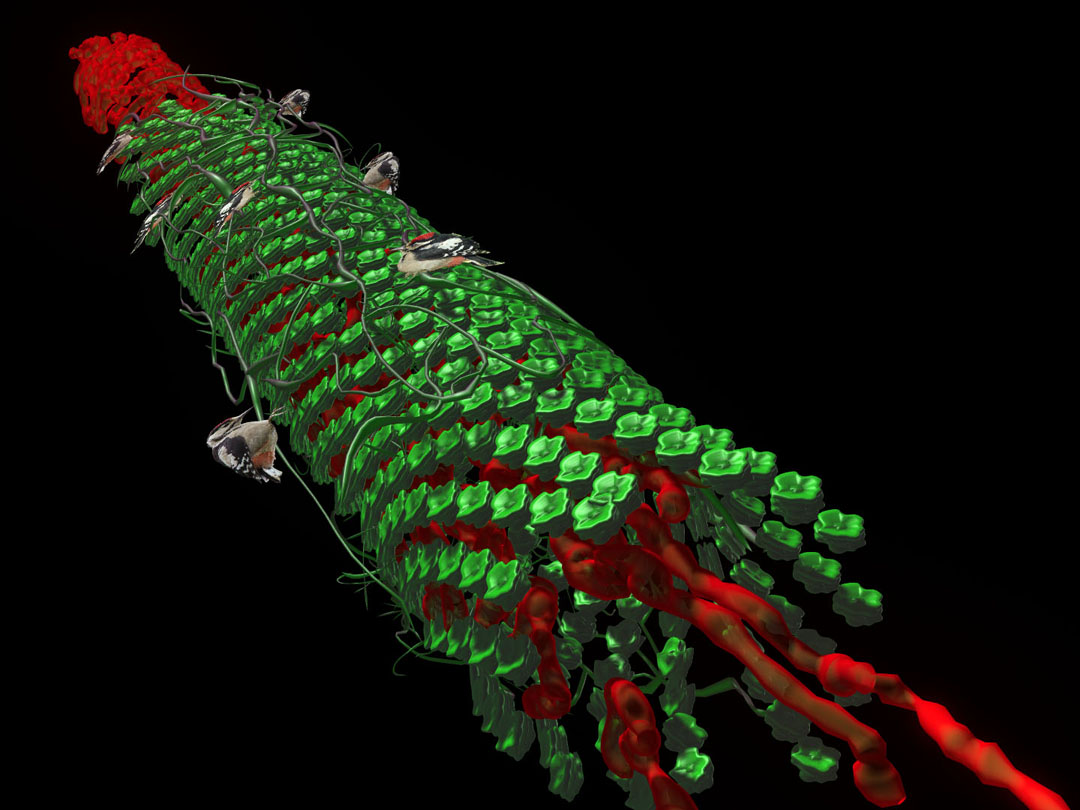This work in The Growing Garden series, created with the screen painting technique, is inspired by some images of filamentous algae and their resemblance to a tree trunk, through which flow the plant’s vital substances. The animation shows the incessant flowing of a series of images in continuous metamorphosis, from the first simple coloured lines recalling felt-tip marks, to branched structures suggestive of venous arborescences, from sections of plant cells that flow exhibiting a geometric order up to grassy filaments that look like fine braided hair. The vital process of the trunk is enriched by a series of woodpeckers pecking at its surface. Some are created with computer graphics, while others are painted directly on the screen.
The Growing Garden
I created a series of works as part of The Growing Garden project, since the nanoworld brought me into contact with completely new images, obtained with the most powerful optical microscopes, evoking ambiguous landscapes, alienating places that recall reality in its fragmentation.
Continuing a line of research that I had undertaken in 1983 with In Corporea Mente, I wondered about the transformation of forms, their unfolding from microcosm to macrocosm. The branched structure of a mineral, for example, is similar in shape and process of aggregation to the peripheral region of a neuron or the atomic structure of some polymers or, again, to the conformation of a tree or coral. I therefore penetrated, through these scientific images, into wonderful woods and dust clouds, which I wanted to rework in 3D, animating each of them with a series of creatures taken from the animal or vegetable world that I painted directly on the screen or canvas, multiplying the image as if it were a Zen ritual. The paradox consists of the fact that the pictorial image is the bearer of a uniqueness and, therefore, of a different DNA for each. If, through self-replication (a powerful promise of nanotechnology), cells build copies of themselves by abolishing diversity, I wanted to follow the opposite procedure: through what is seemingly identical I sought to reanimate the differences.
